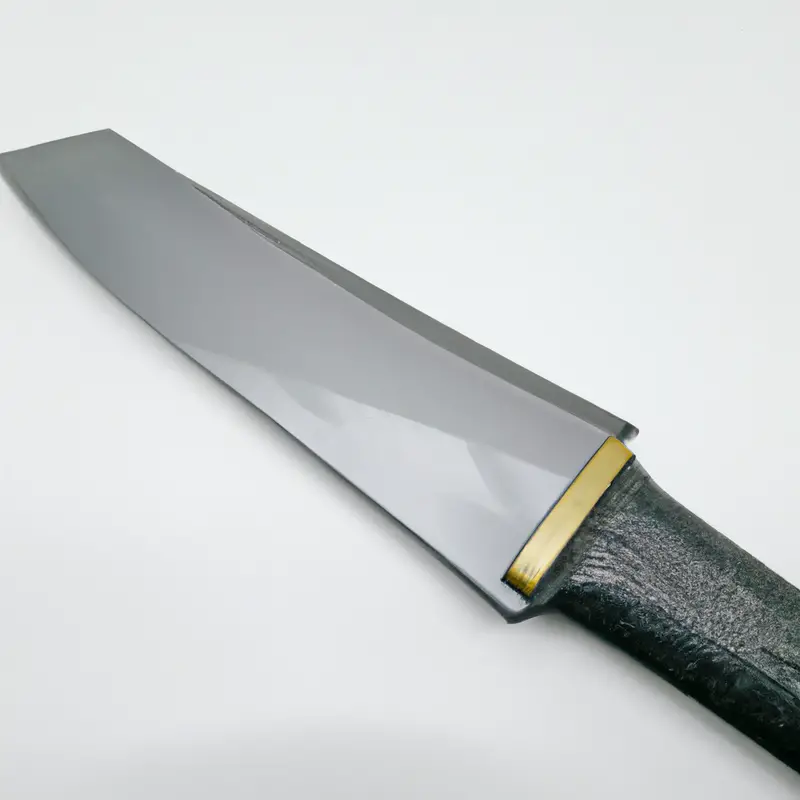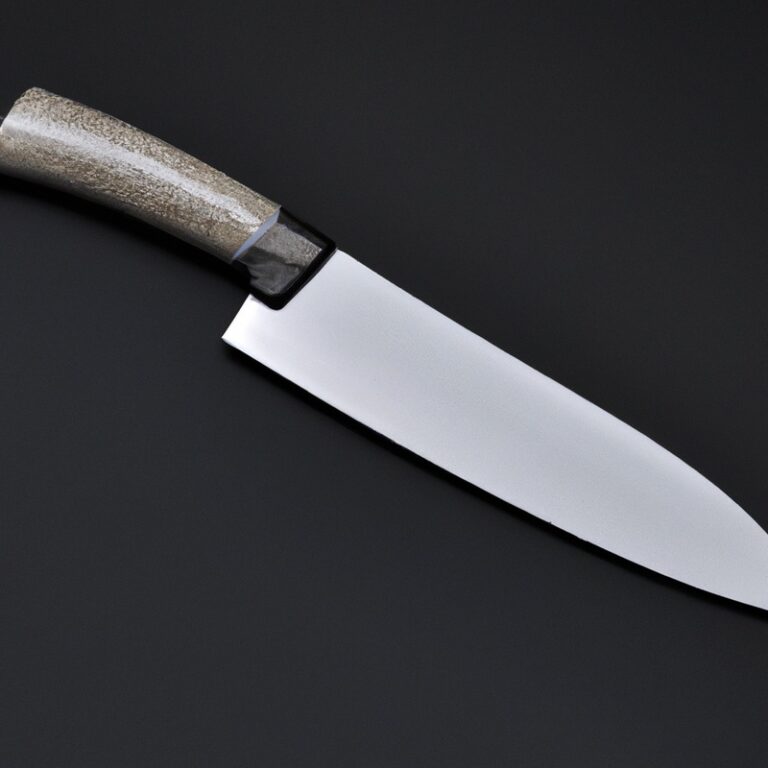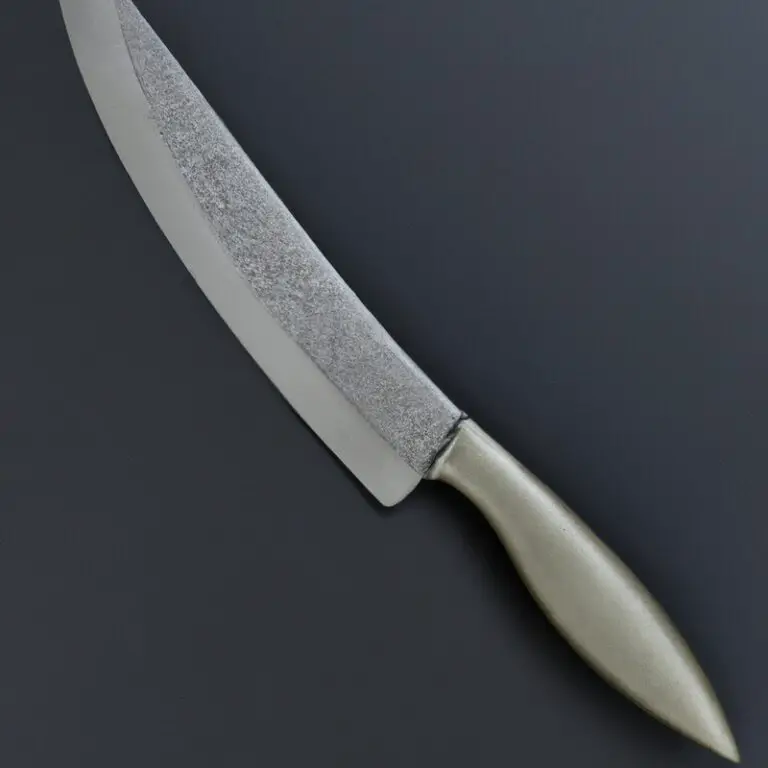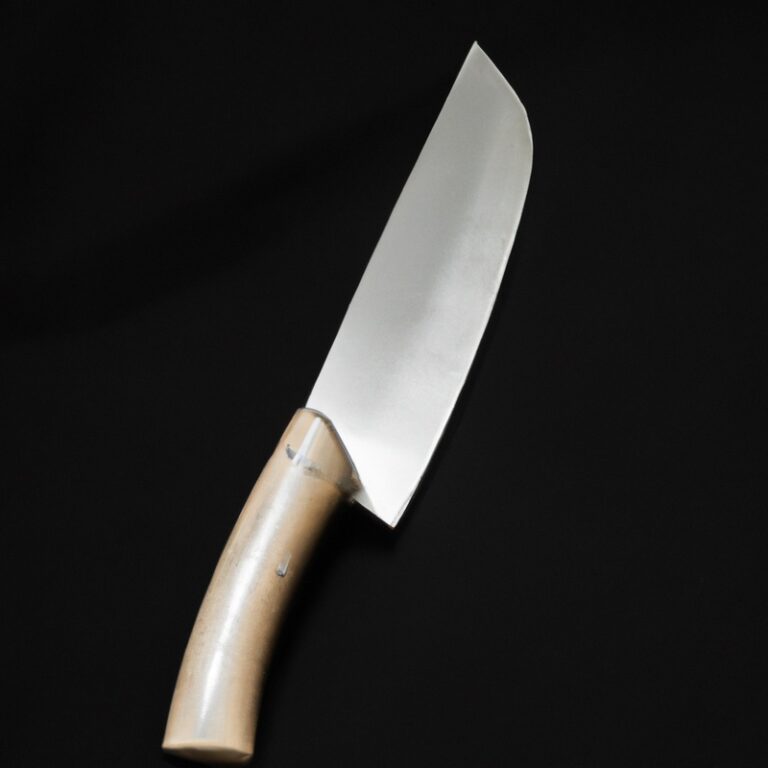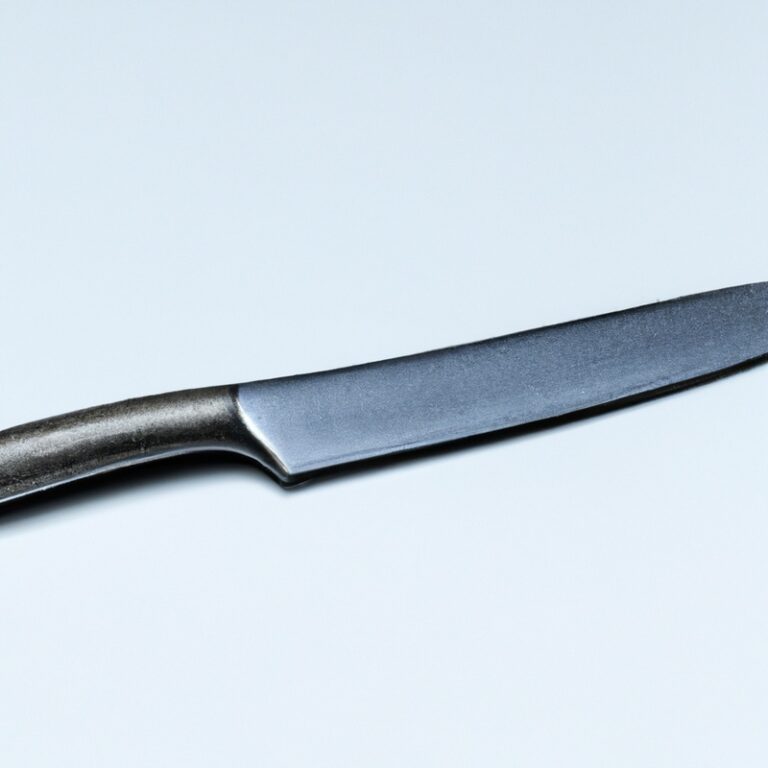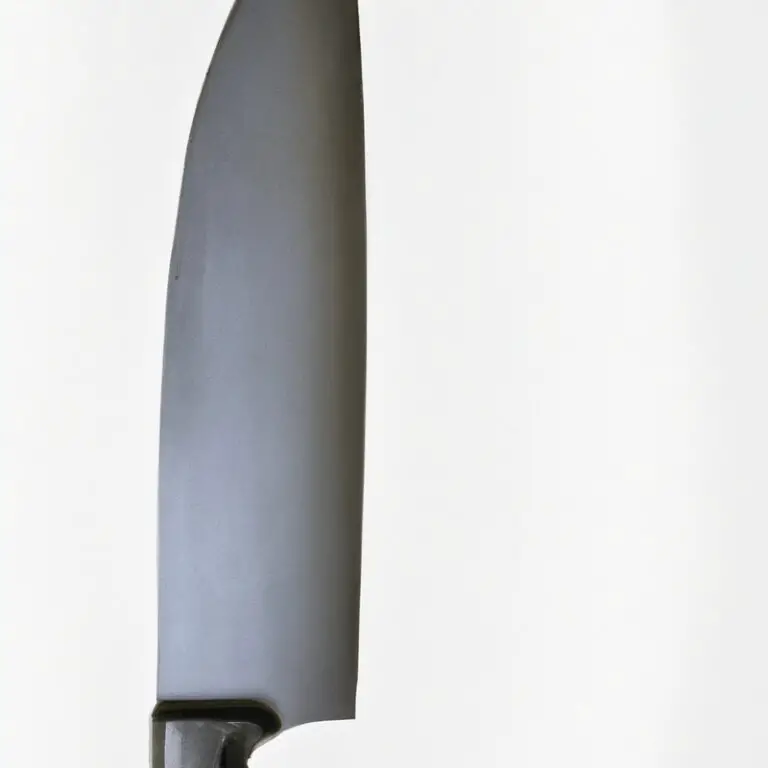What Are The Key Considerations When Purchasing a Gyuto Knife? – Expert Tips
Key Takeaways:
- Consider the blade material and its quality when purchasing a Gyuto knife for durability and longevity. High-carbon stainless steel and Damascus steel are popular options.
- Look for a comfortable and ergonomic handle to ensure a secure grip and reduced hand fatigue while using the knife.
- The knife’s size and weight should also be taken into account according to your personal preference and intended use.
- Purchase a Gyuto knife from a reputable brand with a history of producing high-quality knives and a good reputation for customer service.
A chef’s knife is the most essential tool in every cook’s arsenal, and the Gyuto Knife is becoming increasingly popular due to its versatility and efficiency. But with so many options available, how do you choose the right one?
As a culinary expert, I understand the importance of selecting a high-quality Gyuto knife.
In this article, we will explore the key considerations you should keep in mind when purchasing a Gyuto Knife. From blade material to handle design and everything in between, this guide will help you find the perfect tool for your kitchen.
| Consideration | Description |
|---|---|
| Blade Length | The typical length is between 210mm to 240mm, but longer and shorter blades are available based on individual preferences. |
| Blade Material | High carbon steel or stainless steel are the most commonly used materials. High carbon steel is the preferred choice for its sharpness and edge retention, but requires more maintenance. Stainless steel is more low maintenance and does not rust or corrode as easily. |
| Grind | There are two common blade grinds, flat and convex. A flat grind is easier to sharpen, but does not hold an edge as well as a convex grind. A convex grind is more difficult to sharpen, but holds an edge longer. |
| Handle Material | Common materials for a handle include wood, plastic, and metal. Wood handles are aesthetically pleasing and offer a comfortable grip, but require more maintenance. Plastic and metal handles are more durable and low maintenance. |
| Balance | The balance point of the knife should be towards the front of the blade for optimal control and power during use. |
| Price | Gyuto knives range in price depending on the materials and quality, with high-end knives costing several hundred dollars. It is important to consider your budget when making a purchase. |
Understanding the Basics: What is a Gyuto Knife?
A gyuto knife is a Japanese-style chef’s knife that is essential in any professional or home kitchen. Its blade is typically between 8 and 12 inches long with a pointed tip and a flat edge that curves up to meet a point at the tip.
It is an all-purpose knife that is versatile enough for chopping, slicing, and cutting through meat, fish, and vegetables with ease.
Gyuto knives are known for their sharpness, which enables the user to perform precise cuts with minimal effort. They are typically made of high-quality steel, often layered to enhance durability and sharpness, and are known to hold their edge for longer periods.
Understanding the basic anatomy of a gyuto knife is crucial in selecting the right one for your cooking needs.
Blade Material: Which Material is Best for Gyuto Knife?
The blade material is a crucial factor to consider when purchasing a Gyuto knife. The most common materials used are high-carbon stainless steel, carbon steel, and Damascus steel.
High-carbon stainless steel is durable, resistant to rust and stains, and easier to maintain.
Carbon steel provides a sharp, precise edge, but it requires more maintenance and is vulnerable to rust. Damascus steel consists of layers of steel that create a unique pattern and results in a hard, durable blade with exceptional sharpness.
Consider your preferences and needs when selecting the blade material, but keep in mind that high-quality materials will likely come at a higher price point.
Blade Profile: How to Choose the Right Blade Profile for Your Needs?
Choosing the right blade profile is crucial when getting a Gyuto knife. The blade profile affects the knife’s performance and determines what it is best used for.
Here are some factors to consider when choosing the blade profile:
- Flat or Convex Profile: Flat blade profiles are the most versatile. They are great for general purpose tasks such as chopping, slicing, and dicing. Convex blade profiles are more specialized and are suitable for specific cutting tasks like filleting and skinning.
- Blade Curve: The curve of the blade influences the flow of cutting motion. For instance, a deeper curve will provide more control when rocking the knife back and forth while a shallower curve is better for straight cuts.
- Blade Thickness: The thickness of the blade largely depends on the intended use of the knife. A thicker blade is ideal for tougher and more demanding tasks, while a thinner blade is more suitable for slicing and precision.
Ultimately, the right blade profile depends on the user’s personal preference and the intended use of the knife. Take the time to research and choose a blade profile that suits your needs.
Blade Length: What Blade Length is Most Suitable for Your Cooking?
The blade length of a Gyuto knife typically ranges from 7 inches to 12 inches, with the most common size being 8 inches. It is crucial to choose the most suitable blade length for your cooking needs.
A shorter blade is more comfortable for delicate tasks and smaller ingredients, whereas a longer blade is excellent for preparing larger ingredients and proteins.
If you have a smaller kitchen or work in tighter spaces, then a shorter blade may be more practical. However, if you are preparing food on a larger scale, then a longer blade may be the better option.
Ultimately, it comes down to personal preference and the type of food you will be preparing.
Handle Material and Design: Factors to Consider When Choosing the Perfect Handle
The handle material and design of a Gyuto knife are essential factors to consider when purchasing one. The handle material should be durable, non-slip, and comfortable to hold.
Common materials used for Gyuto knife handles are wood, plastic, and metal.
Wood handles are aesthetically pleasing but require more maintenance, while plastic and metal handles are low maintenance but may be less visually appealing. The design of the handle should also provide a secure grip and balance with the blade for optimal control when cutting.
Additionally, the size and shape of the handle should fit comfortably in your hand to reduce fatigue during prolonged use.
A well-designed handle enhances the overall performance of the Gyuto knife and increases its lifespan.
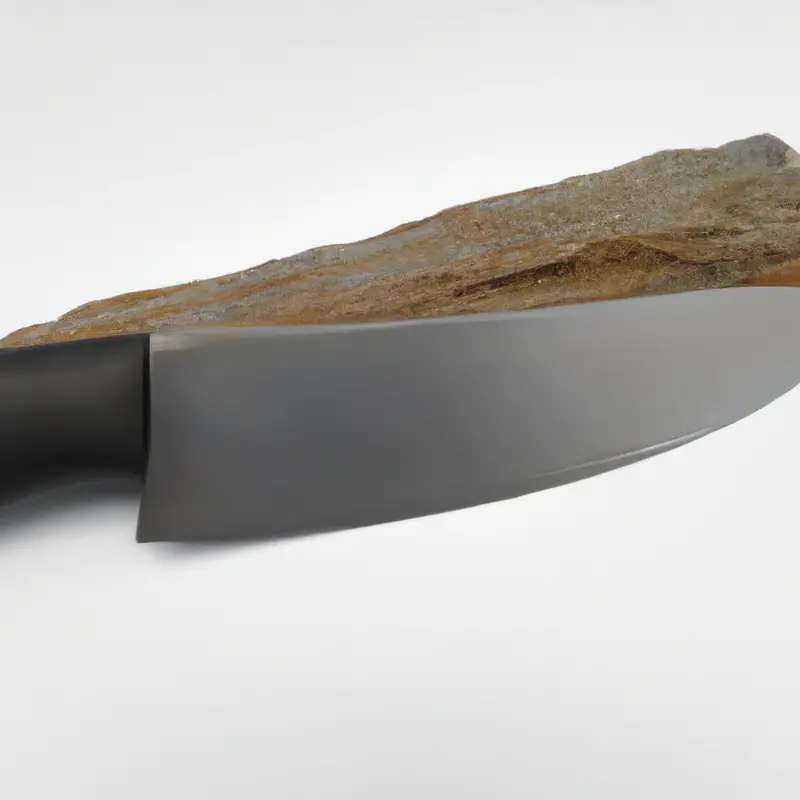
Blade Style: Do You Need a Double-Bevel or Single-Bevel Blade?
When it comes to blade style, it’s important to understand the difference between a double-bevel and a single-bevel blade. A double-bevel blade has a symmetrical edge with bevels on both sides, making it versatile and easy to use for both left and right-handed individuals.
A single-bevel blade, on the other hand, has only one bevel, making it ideal for precise cuts such as meat filleting and vegetable slicing.
However, single-bevel blades require more skill and practice to use effectively. Ultimately, the choice between a double-bevel and single-bevel blade comes down to personal preference and intended use.
Blade Thickness and Flexibility: The Importance of Choosing the Right Thickness and Flexibility
Blade thickness and flexibility are critical factors to consider when purchasing a Gyuto knife. A thicker blade tends to be sturdier and more durable, making it ideal for heavier tasks such as splitting meat and dense vegetables.
On the other hand, a thinner blade offers greater precision and maneuverability, allowing for delicate cuts and slicing.
Regarding flexibility, it is crucial to choose a knife that provides the right amount of flex to match your intended use. A flexible blade can bend to adapt to the shape of the food being cut, making it an excellent option for filleting delicate fish or trimming fat from meat.
Meanwhile, a stiff blade offers more control and stability during heavy-duty tasks like chopping root vegetables.
Ultimately, the thickness and flexibility of your Gyuto knife’s blade will depend on your individual preferences and cooking needs. It is essential to consider the type of food you will be preparing and the tasks you will be doing before selecting a blade thickness and flexibility that will best suit your needs.
Maintenance and Care: How to Properly Care and Maintain Your Gyuto Knife
Maintaining and properly caring for your gyuto knife is crucial to maximize its lifespan and keep it in excellent condition. Here are some tips on how to care for your gyuto knife:
- Wash your knife by hand with mild soap and water, then dry it with a soft cloth immediately after use. Avoid soaking your knife in water or putting it in the dishwasher.
- Avoid cutting on hard surfaces such as glass, marble, or granite as they can damage your blade. Instead, use a cutting board made of wood or plastic.
- Sharpen your knife regularly using a sharpening stone or honing rod. A dull blade can lead to accidents and injuries.
- Store your knife in a safe place, such as a knife block or a protective sheath, when not in use. Don’t place your knife in a drawer with other utensils as it can damage the blade’s edge.
By following these simple tips, you can keep your gyuto knife in excellent condition and ensure that it remains a valuable tool in your kitchen for years to come.
Price and Value: How to Get the Best Value for Your Money When Purchasing a Gyuto Knife
When purchasing a Gyuto knife, it’s essential to consider the price and value to ensure that you get the best value for your money. While it may be tempting to opt for cheaper options, investing in a high-quality Gyuto knife can benefit you in the long term and save you money in the future.
One way to get the best value for your money is to research brands and read reviews.
Look for reputable brands that have a track record of producing high-quality knives and check reviews from customers who have purchased the product. This can give you a better idea of the knife’s performance, durability, and overall value.
Another factor to consider is the knife’s materials.
A higher-quality Gyuto knife will likely have a blade made from premium materials like high carbon stainless steel or Damascus steel, which can increase the knife’s performance and longevity. However, keep in mind that these materials may come at a higher cost.
Lastly, consider what you will be using the knife for and determine if a more expensive option with additional features and a longer lifespan is a worthwhile investment.
Remember that a high-quality Gyuto knife is an investment that will pay off in the long term, so don’t be afraid to spend a little extra for a knife that will meet your needs and last for years to come.
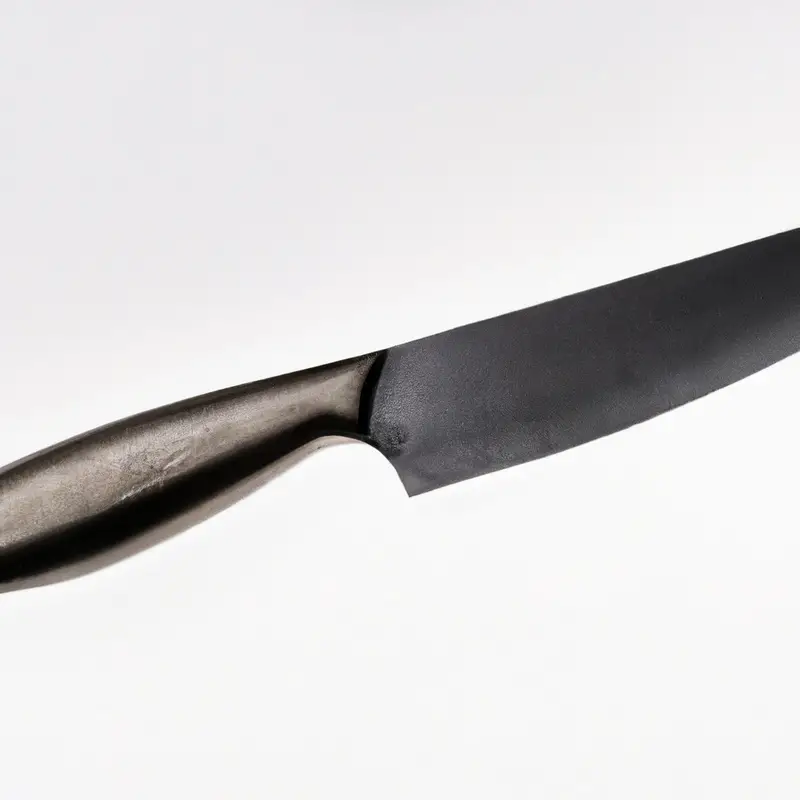
Brand Reputation: Researching the Brand Before You Buy a Gyuto Knife
Brand Reputation is crucial when it comes to purchasing a Gyuto knife. Researching the brand beforehand can help you make an informed decision, and ensure that you are purchasing a high-quality product from a trustworthy source.
Look for brands that have a strong reputation in the market, as they are more likely to produce knives that meet your expectations and are built to last.
You can check their website, social media, or online reviews to gather information about the brand’s history, product quality, and customer service. Additionally, consider brands that have won awards or are endorsed by renowned chefs as they may have an edge over their competitors.
By researching the brand, you can be confident that you are investing in a knife that will meet your needs and last for years to come.
Final Verdict
Purchasing a gyuto knife requires careful consideration of various factors, including blade material, profile, length, handle material and design, blade style, thickness, flexibility, maintenance, price, value, and brand reputation. By understanding the basics and determining your individual needs, you can make an informed decision and invest in a high-quality gyuto knife that will last for years to come.
Remember to prioritize durability, functionality, and safety, as well as brand trustworthiness and customer satisfaction.
With these key considerations in mind, you can confidently elevate your cooking skills and enjoy the precision and versatility of a gyuto knife.

